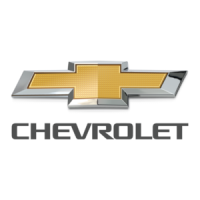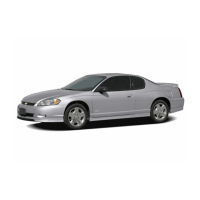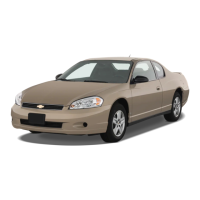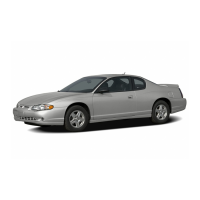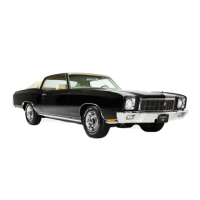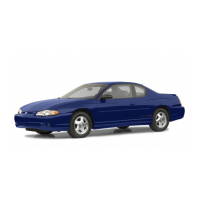
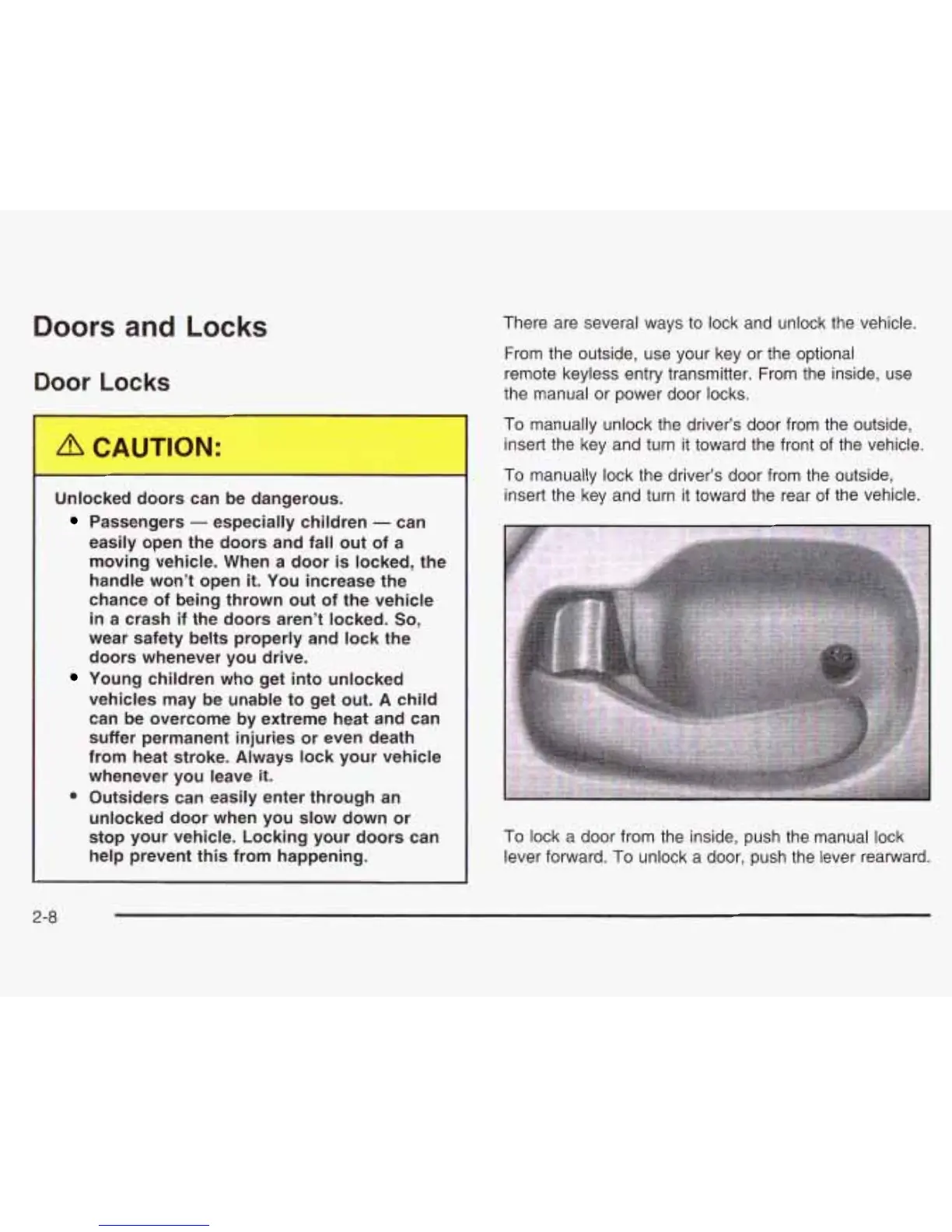 Loading...
Loading...
Do you have a question about the Chevrolet 2003 Monte Carlo and is the answer not in the manual?
| Brand | Chevrolet |
|---|---|
| Model | 2003 Monte Carlo |
| Category | Automobile |
| Language | English |
Details on manual and power seat adjustments, including lumbar, heating, and reclining features.
Information on the split folding rear seat mechanism and its operation.
Comprehensive guide on safety belt usage, types, and proper wear for all occupants.
Guidelines for selecting, installing, and using child restraint systems correctly for safety.
Explanation of frontal and side impact air bag systems, their operation, and safety precautions.
Instructions on how to check the integrity and proper functioning of all restraint systems.
Information about vehicle keys, their usage, and security.
Details on operating door locks, power locks, and lockout protection.
Information on operating power windows and sun visors.
Explanation of the vehicle's anti-theft features like Content Theft-Deterrent and Passlock.
Guidance on new vehicle break-in, ignition positions, and starting the engine.
Instructions for adjusting manual and automatic dimming rearview mirrors.
Details about the OnStar vehicle communications system and its services.
Information on programming and using the HomeLink universal transmitter.
Instructions on operating the power sunroof, including express open and vent features.
How to customize various vehicle features to personal preferences.
Provides a visual guide to the instrument panel's layout with labeled components.
Explains the operation and purpose of hazard warning flashers and other warning devices.
Details on using the turn signal lever for signals, lights, and wipers.
Information on operating the vehicle's exterior lighting systems.
Guide to the vehicle's interior lighting, including courtesy and reading lamps.
Information on using the vehicle's power outlets for accessories.
Instructions for operating the vehicle's heating, cooling, and ventilation system.
Explains the meaning and function of all warning lights, gauges, and indicators on the instrument panel.
Detailed explanation of the instrument cluster's gauges and indicators.
Provides important safety and maintenance messages displayed on the instrument panel.
General advice on defensive driving, alcohol's effects, and vehicle control.
Discusses the severe risks and consequences of driving under the influence of alcohol.
Details on braking action, reaction time, stopping distances, and proper braking techniques.
Information on the TCS, its operation, and its benefits in slippery conditions.
Precautions and tips for driving safely in wet weather conditions.
Advice and tips for safe driving in winter conditions, including vehicle preparation and emergency supplies.
Information and considerations for towing vehicles, including capacity and preparation.
Information on vehicle weight labels and how to properly load occupants and cargo.
Information about servicing the vehicle at a dealership and using genuine GM parts.
Guidance for owners who wish to perform their own vehicle maintenance.
Information related to vehicle fuel, including octane, specifications, and additives.
Essential checks and safety precautions for inspecting components under the hood.
Information on checking, adding, and selecting the correct engine oil.
Location, function, and replacement procedure for the engine air cleaner/filter.
Information on checking and changing automatic transaxle fluid and filter.
Details on the cooling system, coolant types, and their functions.
Overview of the braking system, including brake fluid and wear indicators.
Step-by-step instructions and safety precautions for jump starting a vehicle.
Comprehensive information on tires, including quality grades, inspection, and replacement.
Importance of proper tire inflation and how to check it.
Explanation of the tire pressure monitoring system and its calibration.
Guidance on inspecting tires for wear and the importance of tire rotation.
Indicators and signs that signal the need for new tires.
Advice on selecting and purchasing appropriate tires for the vehicle.
Details scheduled maintenance services and their frequency based on mileage.
Lists checks and services that owners can perform at different intervals.
Owner checks to be performed every time fuel is added.
How to check and maintain the engine oil level.
Monthly checks and services for vehicle maintenance.
Importance of checking tire pressure regularly.
Instructions for checking safety belts, air bags, and related components.
General information on customer assistance procedures and contact points.
Steps to follow to resolve concerns with dealerships and Chevrolet.
Details on the Chevrolet Roadside Assistance program, services, and contact information.
How to contact General Motors to report safety defects.
